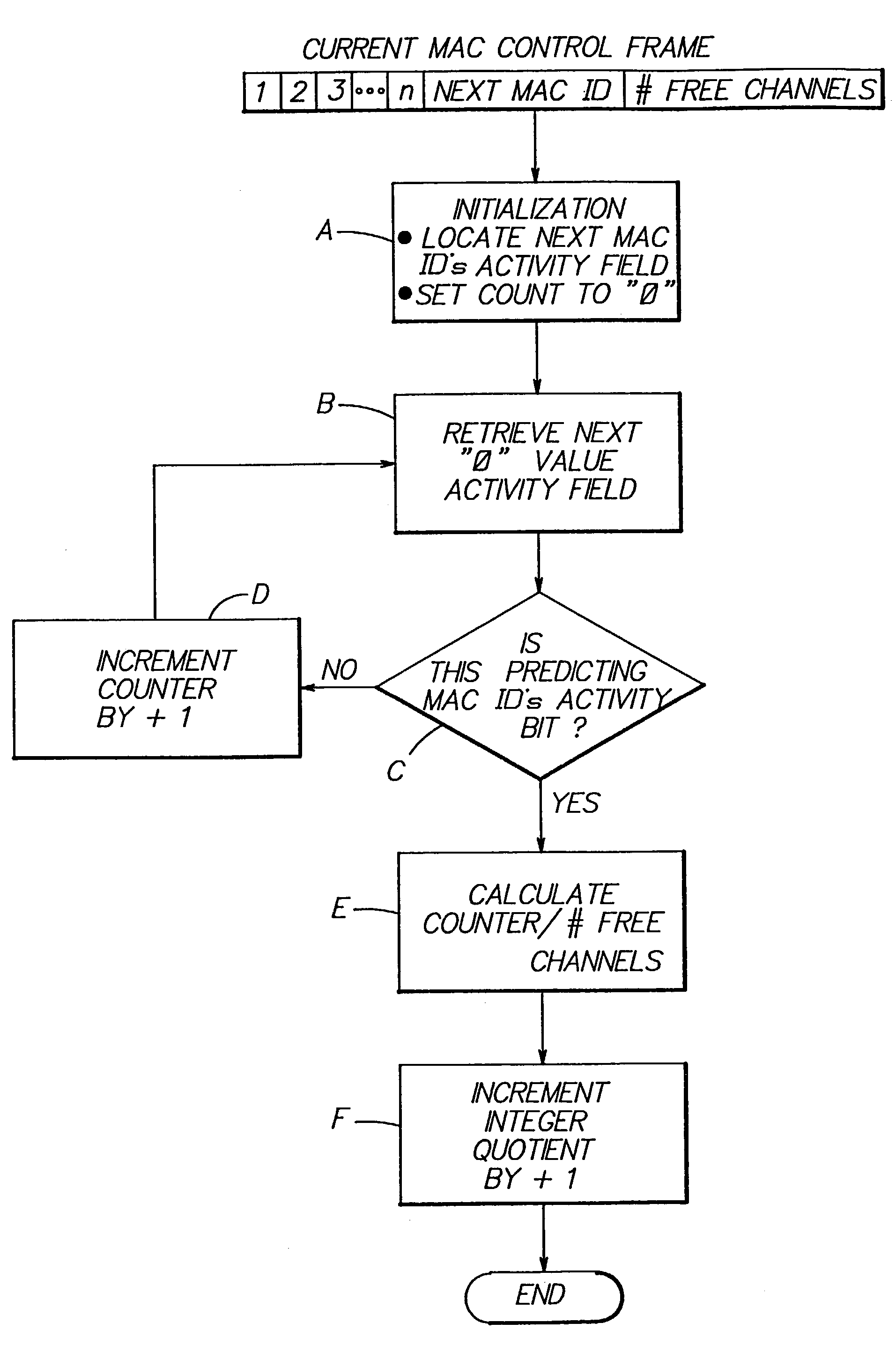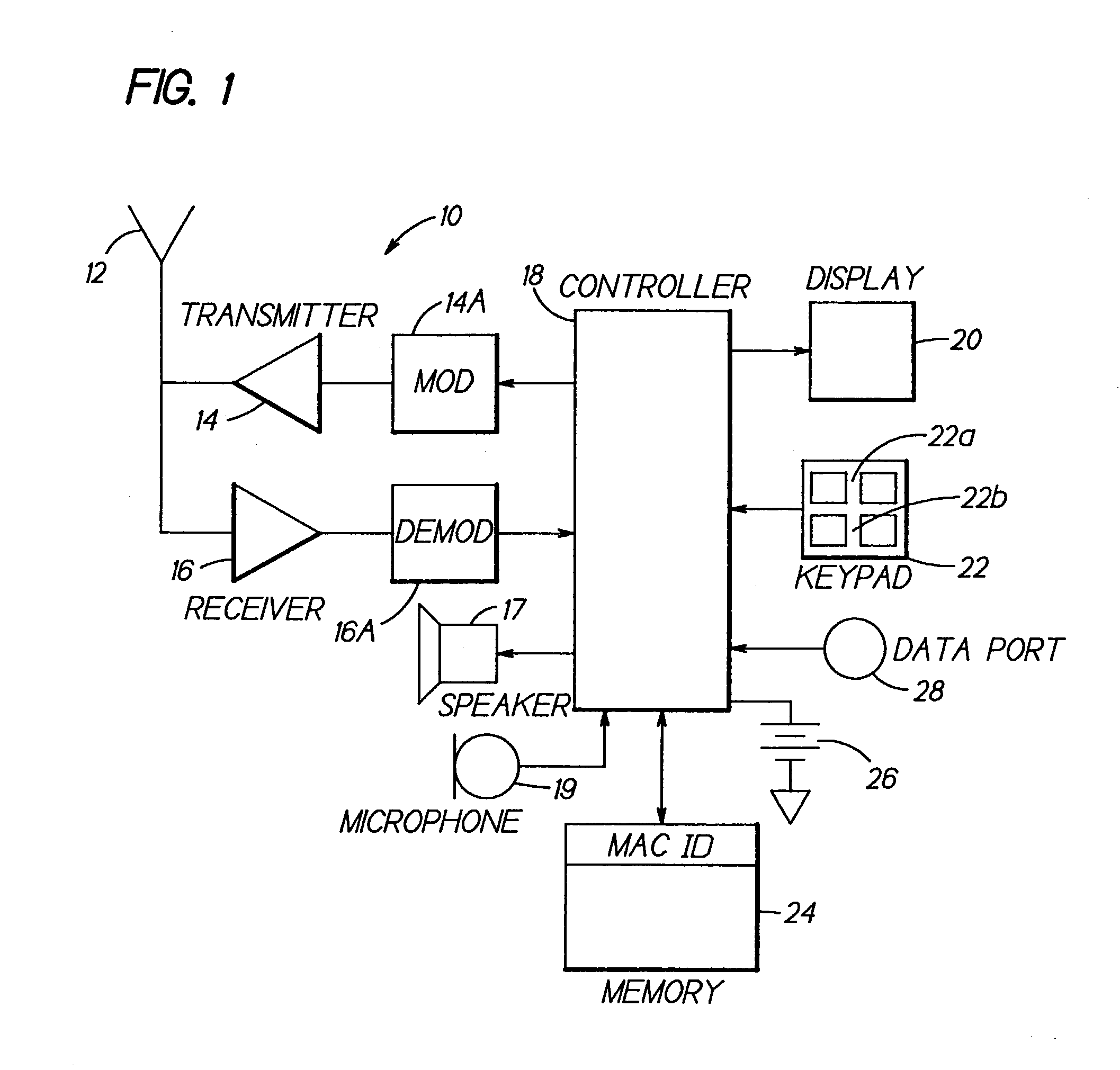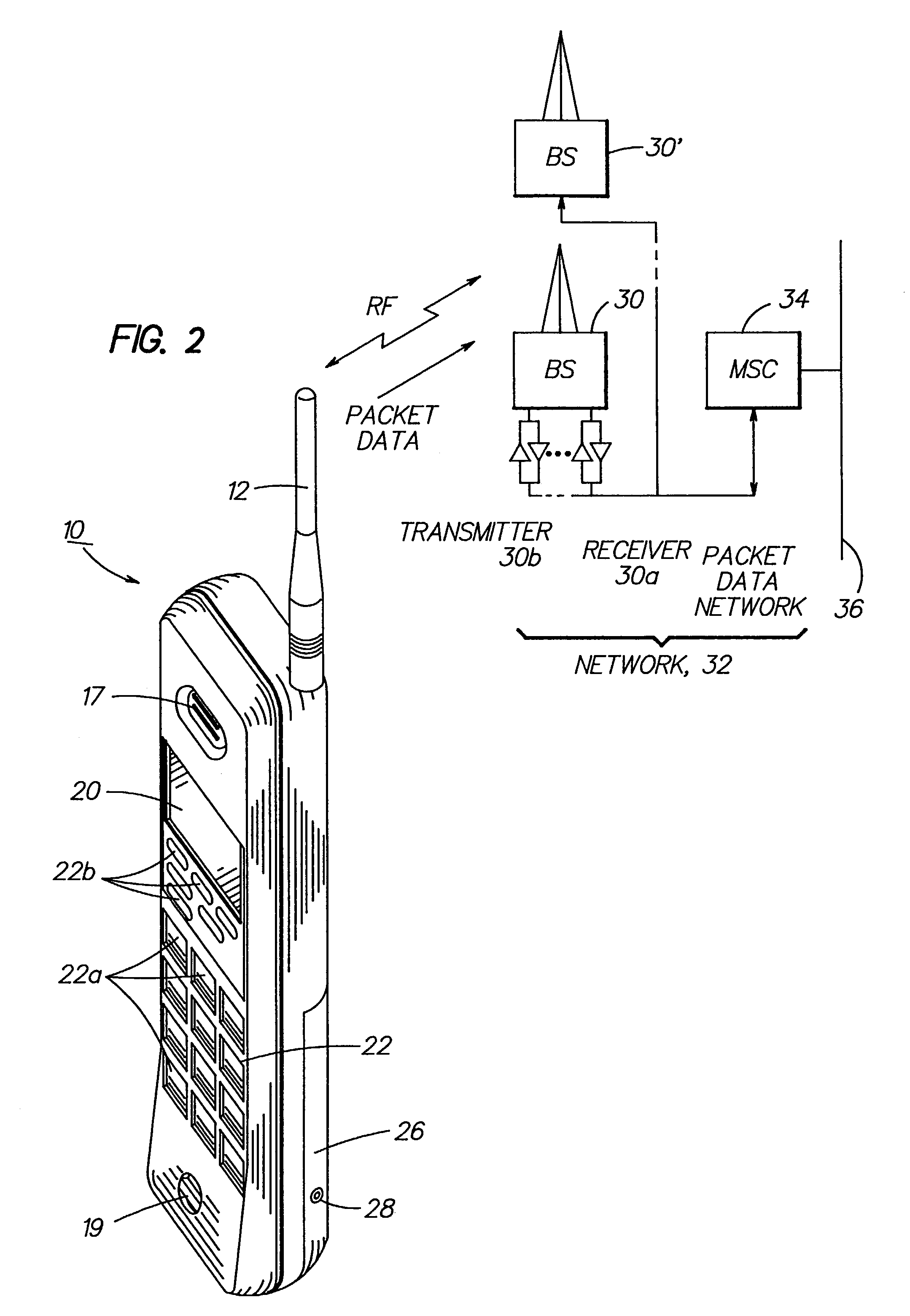Method for scheduling packet data transmission
a packet data and transmission method technology, applied in network traffic/resource management, network data management, wireless commuication services, etc., can solve problems such as packet data ms transmission, achieve stable load conditions, reduce the effect of packet data transmission delay
- Summary
- Abstract
- Description
- Claims
- Application Information
AI Technical Summary
Benefits of technology
Problems solved by technology
Method used
Image
Examples
Embodiment Construction
[0028]Reference is first made to FIGS. 1 and 2 for illustrating a wireless user terminal or mobile station (MS) 10, such as but not limited to a cellular radiotelephone or a personal communicator, that is suitable for practicing this invention. The MS 10 includes an antenna 12 for transmitting signals to and for receiving signals from a base site or base station (BS) 30. The BS 30 is a part of a cellular network 32 that includes a mobile switching center (MSC) 34, and a plurality of additional BSs, such as BS 30′. Each BS, for example BS 30, services an associated cell within the network 32 and is assumed to include a plurality of receivers 30a and transmitters 30b, some of which can be allocated for packet data services. The MSC 34 provides a connection to landline trunks when the mobile station 10 is involved in a call. It is assumed for the purposes of this invention that the network 32 supports packet data service. For example, the network 32 may be coupled to a packet data netw...
PUM
 Login to View More
Login to View More Abstract
Description
Claims
Application Information
 Login to View More
Login to View More - R&D
- Intellectual Property
- Life Sciences
- Materials
- Tech Scout
- Unparalleled Data Quality
- Higher Quality Content
- 60% Fewer Hallucinations
Browse by: Latest US Patents, China's latest patents, Technical Efficacy Thesaurus, Application Domain, Technology Topic, Popular Technical Reports.
© 2025 PatSnap. All rights reserved.Legal|Privacy policy|Modern Slavery Act Transparency Statement|Sitemap|About US| Contact US: help@patsnap.com



